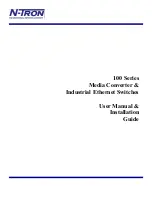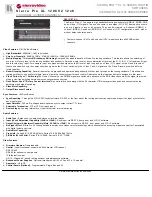
Waters Network Systems
User’s Manual
Page 52
GSM-2108/GSM-1008SFP
Class:
64 types of traffic. Can set High Priority or Low Priority for each port respectively.
Figure 5.23 – IP Differentiated Services
5.12 SNMP
Configuration
Any Network Management System (NMS) running the Simple Network Management Protocol
(SNMP) can manage devices equipped with the SNMP agent, provided that the Management
Information Base (MIB) is installed correctly on the managed devices. SNMP is a protocol that is
used to govern the transfer of information between SNMP manager and agent. This protocol
traverses the Object Identity (OID) of the management Information Base (MIB), described in the
form of SMI syntax.
SNMP is passive except for the issuing the trap information. The switch supports a function to
turn on or off the SNMP agent. If you set the field SNMP to
Enable
, the SNMP agent will be
launched. All supported MIB OIDs, including RMON MIB, can be accessed via SNMP manager.
If SNMP is set to
Disable
, the SNMP agent will not be activated. The related Community Name,
Trap Host IP Address, Trap and all MIB counters will be ignored.
Function name:
SNMP Configuration
Function description:
This function is used to configure SNMP settings, community name, trap host and public traps as
well as the throttle of SNMP. A SNMP manager must pass authentication by identifying both community
names, then it can access the MIB information of the target device. So, both parties must have the same
community name. Once the setting has been completed, click
Apply
and the setting will take effect.
Parameters description:
SNMP:
The term SNMP is used for the activation or de-activation of SNMP. Default is Enable.
Get/Set/Trap Community:
Community name is used as the password for authenticating if the requesting network
management unit belongs to the same community group. If they don’t have the same
community name, they don’t belong to the same group. Hence, the requesting network
management unit cannot access a device with a different community name via SNMP protocol;
















































